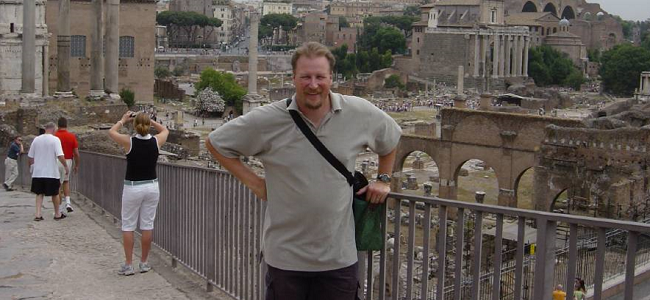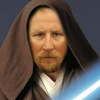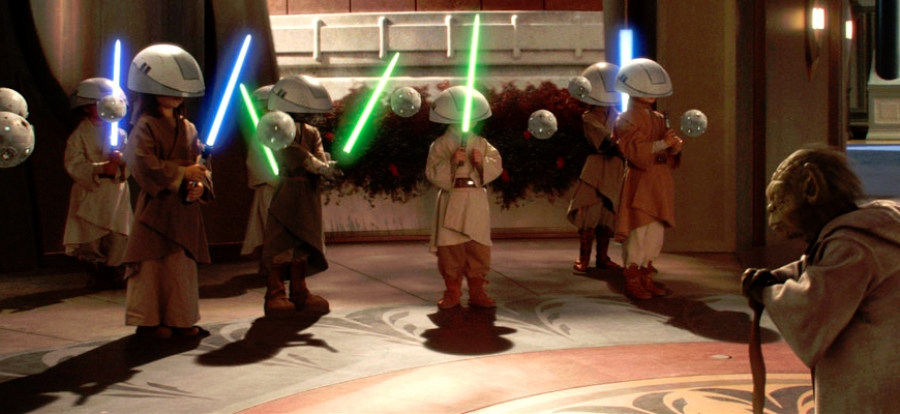Let me first start off with my Star Wars credentials, to hopefully convince you the reader that I at least know my Star Wars…
- I flew home to be with my old high school buddies to camp out for Revenge of the Sith midnight opening in Newport, CA.
- I listen religiously to the Star Wars Minute podcast.
- As a man in my forties, my mother bought me a Jedi robe this last Christmas.
- I can’t stop thinking “how did Han get his hands out of his cuffs and raised right before he was frozen in carbonite”?
- My Google and Twitter profile pics. Oh, and please do follow me!
So, what about my teaching?
In World History, we don’t just look at the people and events from the past. Instead, we look for students to learn skills of a historian (eg cause and effect, finding comparisons and analyzing changes over time, etc). For example, I use the major theme in the trilogy of the Death of the Republic as a way to help my students find those similar comparisons to real events in the past.
I focus first on the transition from the Roman Republic to the Roman Empire. In my lectures, I stress how about the change from one form of government to another, which in essence is a revolution, coming not with resistance but with welcoming from the masses. The reason for this response had nothing to do with the peoples’ desire for a new political system; it was because they were in dire need of safety and stability. After the civil wars of Julius Caesar and then with Marc Antony and Augustus, the people of Rome were in desperate need of an end to conflict and something (or someone) to guarantee their security.
This, in essence, is the story of Emperor Palpatine. He created an enemy, one which would make the people need someone to protect them. Then, he used that fear to have the people themselves ASK him for protection. Much like Caesar’s taking the title of dictator (which historically in Rome was a position which could be held for only a year), and declaring he was now emperor for life, Palpatine persuaded the Senate to grant him “emergency powers”, all the while knowing he would never relinquish this power.
I end this discussion by showing a photo of myself on a trip to Rome where I am standing near Palatine hill… the inspiration (I assume) of Lucas’ naming of the emperor Palpatine and the change of his name from Chancellor Valorum to Emperor Palpatine, which is so similar to Octavian’s name / title change to Augustus.

It is with this change in Rome that I want my students to find comparisons. How could the rise of Emperor Palpatine mirror the rise of Caesar and Augustus? This then naturally leads the students into seeing the similarities between these changes in political systems, particularly with the focus of how the people (and the Senate which represents them) allow this to happen.
I connected my VCR to my computer and then took my VHS tapes (no, not the remastered ones, but the originals) and then began watching the movies over and over, recording to the computer just the clips which show the collapse of the Republic and the rise of the Empire. I then use this finished clip to try to bring clarity to the conversation we just had.
As the class moves forward through history, I bring back these comparisons when we see future examples of coup d’états which bring dictators to power, not through violence and force, but through fear and acceptance. The two most striking examples of these coups are the rise of Napoleon after the French Revolution and the Hitler in post World War 1 Germany.
In the case of Napoleon, one of the major questions which teachers look at when assessing his role in the French Revolution was whether he was a savior or destroyer of its ideals of Liberte, Fraternité and Égalité. Many teachers throughout the country use this prompt or final assessment in their French Revolution unit. It is here where I bring back that conversation we had months before, and I ask the students to discuss if they think their similarities are valid or not. This is more a challenge than the Roman example because Napoleon is often seen as someone who tried to protect the Enlightenment concepts of liberty and freedom.
It his ascension, and even crowning himself, to the title of Emperor which brings up the comparisons to Rome and Star Wars. His justification in taking this title was, like before, a pledge to protect his people from those trying to destroy what they created. But in order to protect from forces possibly removing him from power he went on the offense and tried to conquer all of Europe. This conquest in his eyes was both protecting France and a way to spread the principles of the Enlightenment to all the monarchies in Europe.
Lastly, we will discuss this concept again when we reach the twentieth century and learn about the rise of totalitarian governments. This is interesting because we see many of those same characteristics as earlier dictatorships, but now we have new names like Fascism, Nazism and Soviet Communism. The most poignant example is that of Hitler’s rise. His attempted government overthrow in Munich in 1923 lead to his imprisonment, and it in prison that many of us know about his writing of Mein Kampf. However, along with that manual for Nazism, it was here he fashioned his plan to come to power from WITHIN the system. He used ethnic scapegoats for blaming Germany’s ills and made the German people believe that a new system was needed in order to break out of the economic problems which befell Germany after WW1 and the Great Depression.
Only around 10% of the Germans were members of the Nazi party, and we can compare this to how the many of the peoples in the Galactic Empire simply acquiesced to the Nazis because it seemed to easier and safer to allow this all to just happen.
Years later, the History Channel’s Star Wars: Legacy Revealed did a fantastic job covering this aspect of the series, and even went one step further, discussing how we in the US were willing to give up some of our freedoms in the days after 9/11, all in the name of security. And this was all done without the populace even knowing or seeing it happen… the masses often just need someone to make them feel safe.
In was not long after I started using these comparisons when I found an article from George Lucas in an Entertainment Weekly magazine from 2004, which made it all come together for me.
Here is a quote from Lucas during the interview:
“If you were to look at Star Wars for what it actually is – get rid of all that cool stuff – one of its major issues is how you get from a democracy into a dictatorship without a coup. How did the Senate turn it over to Caesar? How did France turn over their republic to Napoleon? And how did Germany hand their country over to Hitler?
That is embedded in the three new films. When you see them all you’ll say ‘Oh, I see how that all works.’ The controversy is going to be that people expect some horrible thing to happen to Anakin (Vader) but it’s much subtler. It’s something everyone faces.”
This validated much of what I had thought and helped me see that Lucas really looked back at history to create the situation where Vader could be created and then find redemption.
For many of you non-social studies teachers this may have been a little too much history, but I appreciate James in allowing me to share how this these movies help me relate and connect my students to the themes in World History.
Do you use Star Wars in your teaching? Let us know in the comments!


















